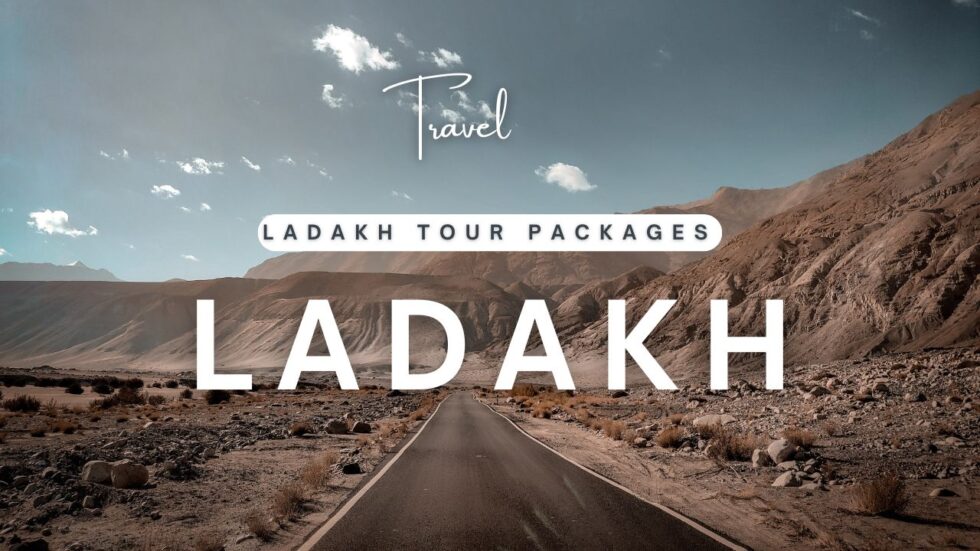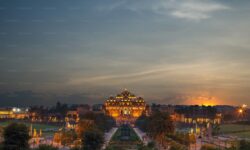
Introduction to Trekking in Ladakh
Trekking in Ladakh is not just a physical journey—it’s a connection with landscapes that feel untouched, almost otherworldly. Nestled between the Karakoram and Himalayan ranges, Ladakh offers a harsh yet hypnotic charm that draws trekkers from around the globe. High-altitude passes, ancient monasteries clinging to cliffs, and wide-open skies become part of your everyday experience once you set foot here.
The terrain is not forgiving, the air is thin, and luxuries are scarce—but that’s exactly what makes trekking in Ladakh so real, so grounding, and so unforgettable.
Why People Are Drawn to Trekking in Ladakh
It’s the sheer contrast of everything. One moment you’re walking through a dry, rocky expanse, and the next, a snow-fed stream cuts across your path. The sky seems closer. The silence is deep. And unlike lush forests or alpine greenery found in other parts of the Himalayas, Ladakh offers a raw, minimalistic beauty.
But it’s not just nature. Trekking in Ladakh also lets you pass through villages where time has paused. Whitewashed homes, prayer flags, chortens, and warm greetings from the locals add an emotional layer to the experience.
You’re not just crossing kilometers—you’re stepping through centuries.
Top Treks to Consider While Trekking in Ladakh
- Markha Valley Trek
The most well-known route when it comes to trekking in Ladakh. It includes everything—from river crossings and traditional villages to views of Kang Yatse and Stok Kangri. You’ll walk past monasteries like Hemis and Thiksey, and if lucky, might even spot blue sheep or a lammergeier circling above. - Chadar Trek (Zanskar River Trek)
Not for the faint-hearted. This trek involves walking on the frozen Zanskar River during peak winter. The cold bites through layers, but the experience of sleeping in caves and hearing the river crack underfoot is unmatched. - Stok Kangri (now restricted)
While currently restricted to preserve the environment, the climb to Stok Kangri summit used to be one of the most ambitious choices for high-altitude trekking in Ladakh. - Sham Valley Trek
Also known as the “Baby Trek,” this one is ideal for beginners. It combines low-altitude hikes with the cultural charm of Ladakhi villages. - Lamayuru to Alchi Trek
This trek is ideal for those who want to combine ancient Buddhist sites with hiking. It’s quieter and offers a sense of solitude that’s becoming rare.
Best Season for Trekking in Ladakh
Ladakh has two very different trekking seasons.
- Summer (June to September): Ideal for all treks except the Chadar trek. Day temperatures are bearable, and mountain passes are snow-free.
- Winter (January to February): Best time for the Chadar Trek. Conditions are extreme, but the frozen river creates a unique corridor through the Zanskar region.
Avoid visiting in April-May or October-November as these transitional months come with unpredictable weather and closed trails.
Altitude and Acclimatization
This is not just a tip—it’s a rule. When trekking in Ladakh, altitude sickness can affect even experienced hikers. Leh, the base for most treks, sits at over 3,500 meters. Almost all routes go even higher.
Spend at least two full days in Leh before starting your trek. Hydrate constantly. Avoid alcohol. Walk, don’t rush. Your body needs time to adapt to the lower oxygen levels.
Ignore acclimatization and you risk your entire trek—or worse, your health.
What to Pack for Trekking in Ladakh
Ladakh is all about extremes. Sunny days can feel hot, but a shadow or wind turns the temperature icy. Nights are always cold. Packing smart is essential.
Essentials include:
- High-quality trekking boots (already broken-in)
- UV sunglasses and high SPF sunscreen
- Layered clothing: base layer, fleece, down jacket, windproof outer
- Reusable water bottles or hydration packs
- Snacks like nuts, chocolate, and energy bars
- Basic first-aid kit with altitude medication
- Sleeping bag (check temperature rating)
- Trekking poles for better balance
Always carry a copy of your ID and required permits.
Local Culture and Respect
Trekking in Ladakh isn’t only about walking through mountains; it’s about walking with awareness. The locals are deeply spiritual and culturally grounded.
- Ask before taking photographs of people or religious sites.
- Dress modestly, even while trekking.
- Avoid stepping on prayer stones or mani walls.
- Greet with “Julley” (hello/thank you/goodbye).
The Ladakhi people are generous and welcoming, and your respect for their traditions completes the circle of genuine experience.
The Role of Homestays and Local Guides
When trekking in Ladakh, consider choosing homestays in villages along the route. It brings income to the local community and gives you a deeper connection to the region.
Local guides also add value beyond navigation—they share stories, point out edible plants, and keep you safe in unpredictable conditions. Hiring a local guide supports sustainable tourism and often becomes the highlight of the journey.
Risks and Realities of Trekking in Ladakh
Let’s not romanticize it—trekking in Ladakh can be tough. Trails vanish under snow. Landslides can block paths. Sudden weather shifts are common. Phone signals are unreliable, and help can be hours away.
That said, preparation makes a difference. Hire certified guides, inform someone of your route, and stay updated about weather conditions.
Also, never underestimate the importance of proper shoes, socks, and staying dry. A wet boot or blister in Ladakh’s dry cold can ruin your momentum.
Permits and Regulations
Some regions in Ladakh, especially near borders, require special permits. Indian citizens need an Inner Line Permit (ILP), while foreign nationals may need Protected Area Permits (PAP).
Always check with your trekking operator or local tourism office in Leh. Carry photocopies, as you’ll need to show them at multiple checkpoints.
Mental Shift: Why Trekking in Ladakh Feels Different
This isn’t a commercial trek with hot showers and comfy tea houses. Here, you rise with the sun, sleep under galaxies, and listen to silence so deep it hums.
Many who come for the trek leave with something more—clarity, presence, and a profound sense of place. Ladakh teaches patience. It quiets the mental chatter. It reminds you that you don’t always need signal or speed.
That’s why trekking in Ladakh stays with people long after their boots leave the dust behind.
Practical Tips Before You Arrive
- ATM Access: Limited to Leh. Carry enough cash for your entire journey.
- Connectivity: Internet and mobile signals are patchy. Don’t count on constant connection.
- ATMs, Medical Help: Available only in Leh or major towns. Carry essentials.
- Waste Management: Carry back what you bring. Plastic stays forever—your respect for the land means leaving no trace.
- Backup Days: Weather delays are common. Keep 1-2 extra days in your itinerary.
Closing Thoughts
Trekking in Ladakh is about stripping away comfort and leaning into what’s real. Mountains don’t bend for you—you adjust to them. You listen to the wind. You follow footsteps older than maps.
Every pass crossed, every night spent under stars, becomes a reminder of your smallness—and your strength. It’s not just a trek. It’s a shift. A return. A reminder that there are still places in the world where the earth speaks louder than noise, and silence heals more than words.
If you are ready for that, then trekking in Ladakh isn’t just worth it—it’s waiting.








